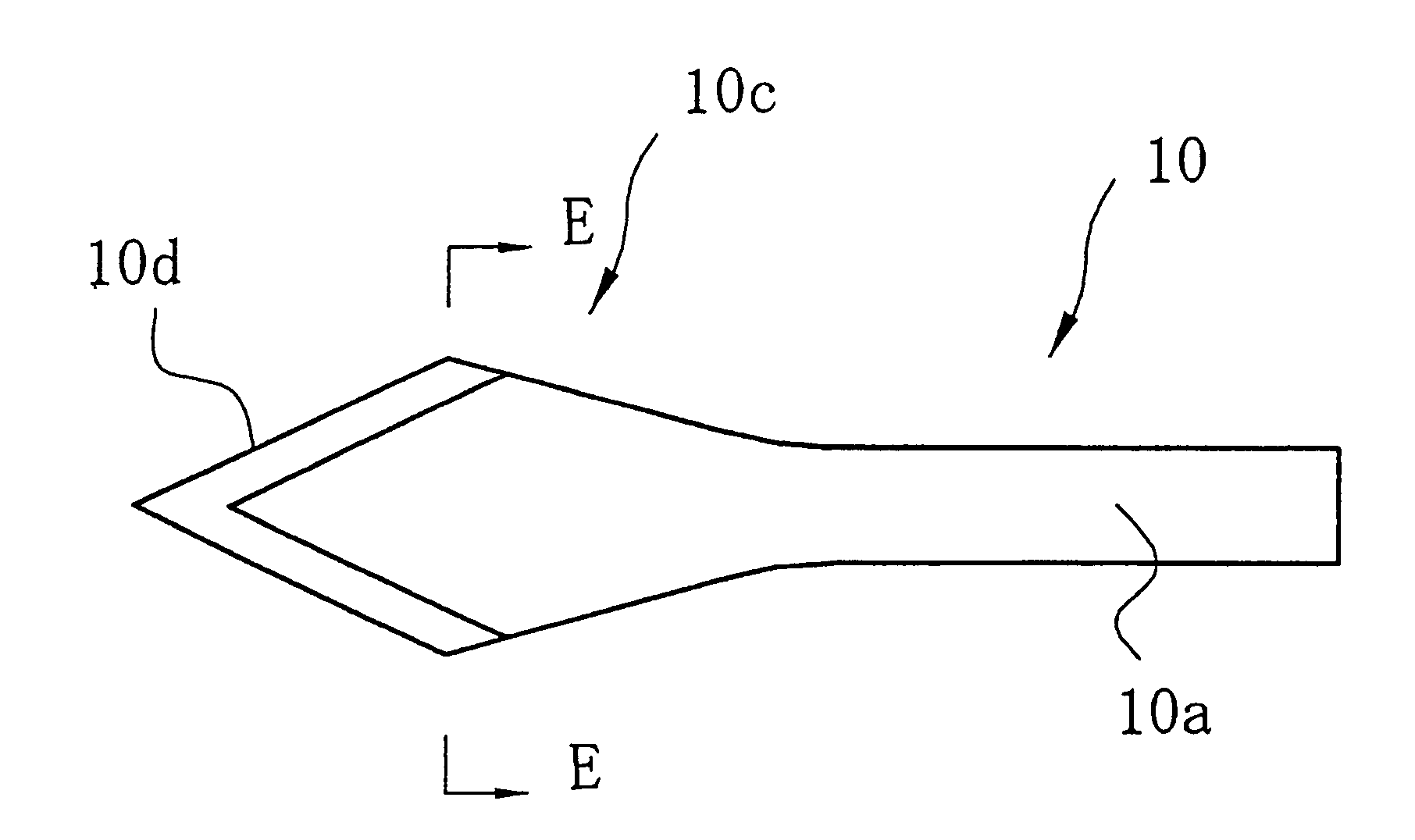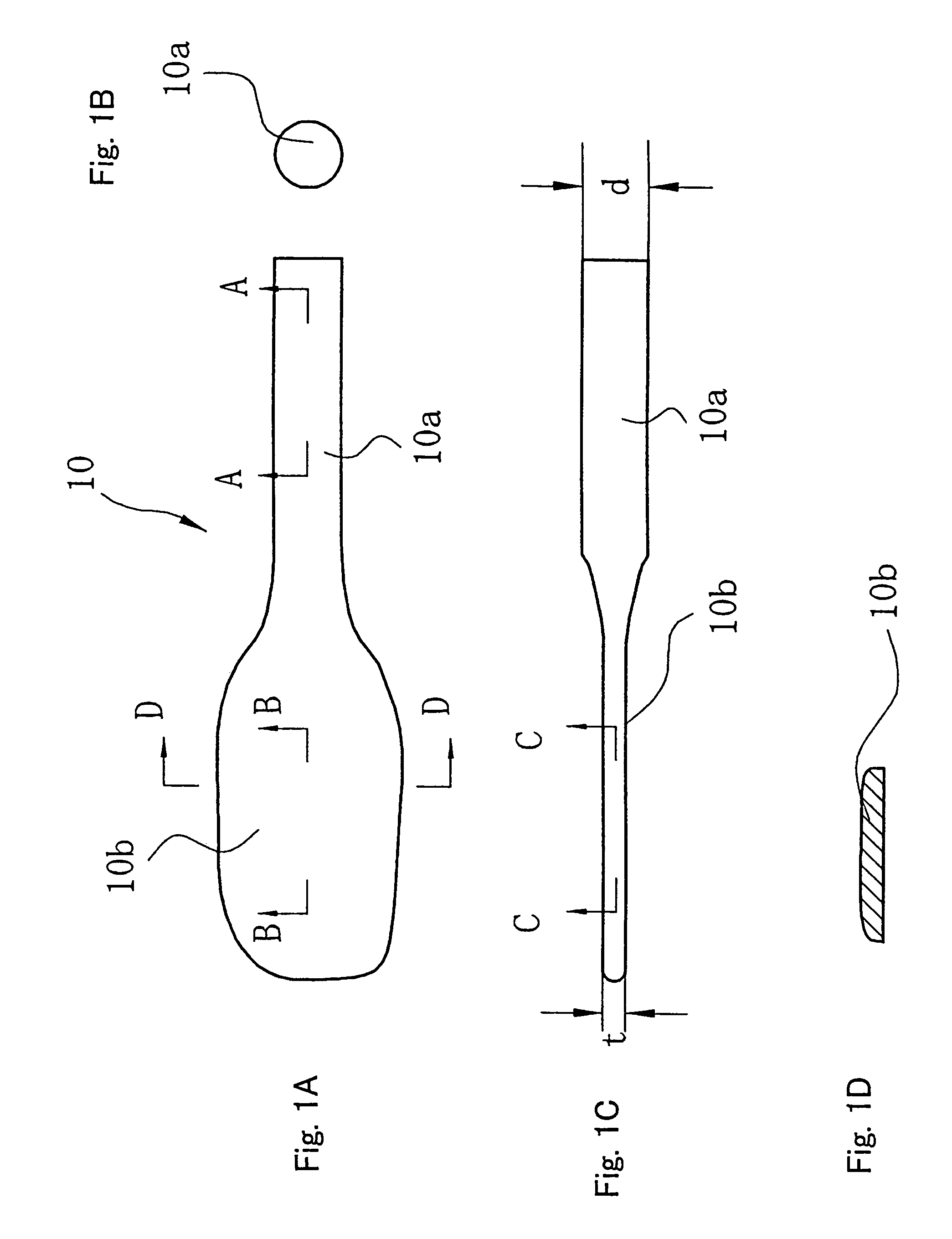Medical knife
a technology for medical devices and knives, applied in the field of medical devices, can solve the problems of low corrosion resistance, inability to quench austenitic stainless steel, cracks, chips or breaks, etc., and achieve the effects of sufficient hardness and sharpness, excellent corrosion resistance, and easy to rus
- Summary
- Abstract
- Description
- Claims
- Application Information
AI Technical Summary
Benefits of technology
Problems solved by technology
Method used
Image
Examples
Embodiment Construction
[0032]An embodiment according to the present invention is described forthwith with reference to attached drawings.
[0033]Austenitic stainless steel SUS302 (carbon content: 0.15% or less) is used as the material for a medical knife according to the present invention. This type-B stainless steel SUS302 for springs or SUS304 having less carbon content may be used. The carbon content included in the SUS304 is 0.08% or less. However, since the carbon content greatly influences work hardening, the carbon content of the SUS304 is considered to be the lower limit, namely, approximately 0.08% to 0.15%.
[0034]Once a wire rod of SUS302 6 to 10 mm in diameter is subjected to solution heat treatment, the resulting wire rod is wire-drawn into 5 to 8 mm in diameter (reduction ratio is approximately 60%). This is subjected to solution heat treatment again, then wire-drawn into 2 to 3 mm in diameter (reduction ratio is approximately 60%). This is further subjected to solution heat treatment again, the...
PUM
| Property | Measurement | Unit |
|---|---|---|
| width | aaaaa | aaaaa |
| diameter | aaaaa | aaaaa |
| temperature | aaaaa | aaaaa |
Abstract
Description
Claims
Application Information
 Login to View More
Login to View More - R&D
- Intellectual Property
- Life Sciences
- Materials
- Tech Scout
- Unparalleled Data Quality
- Higher Quality Content
- 60% Fewer Hallucinations
Browse by: Latest US Patents, China's latest patents, Technical Efficacy Thesaurus, Application Domain, Technology Topic, Popular Technical Reports.
© 2025 PatSnap. All rights reserved.Legal|Privacy policy|Modern Slavery Act Transparency Statement|Sitemap|About US| Contact US: help@patsnap.com



